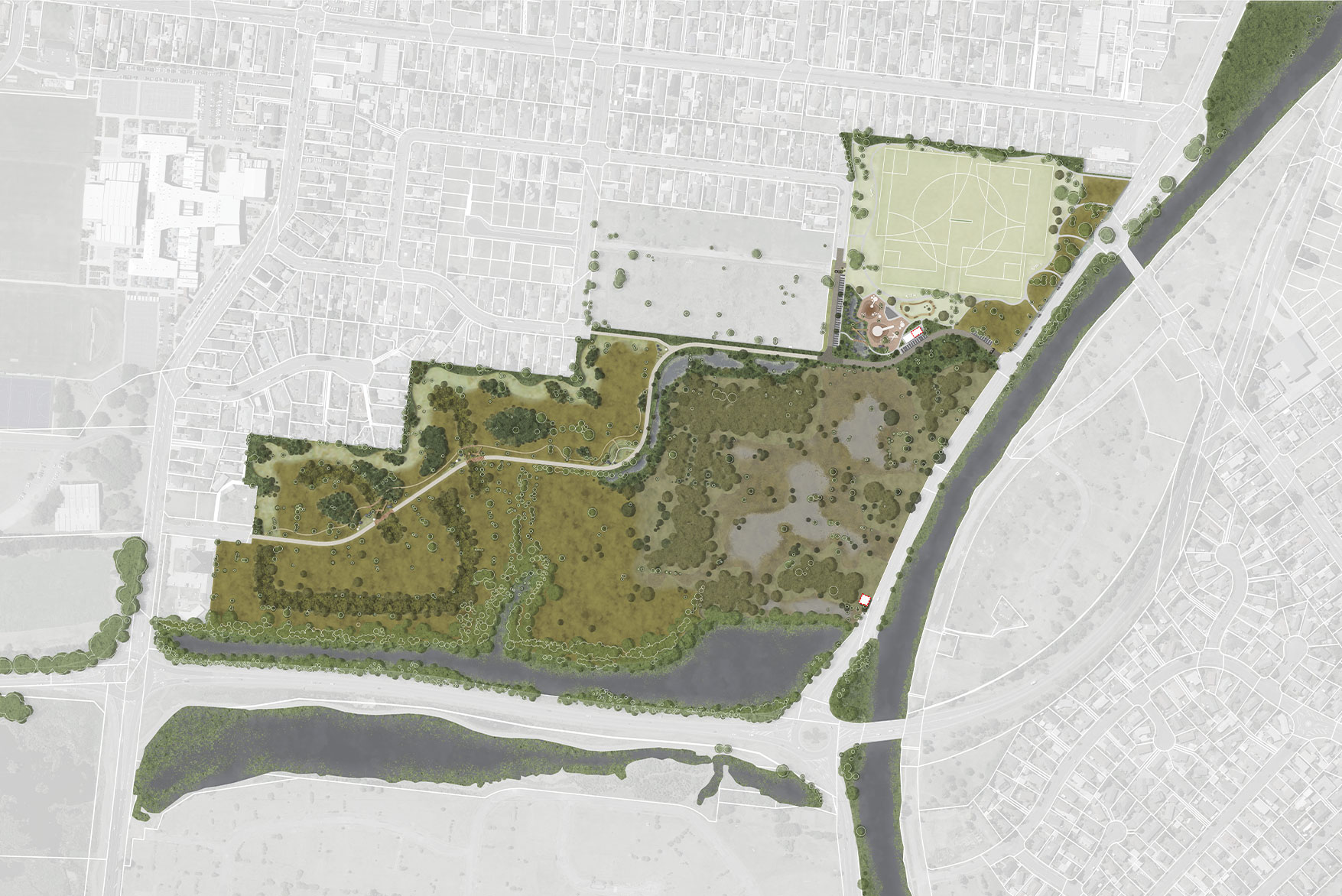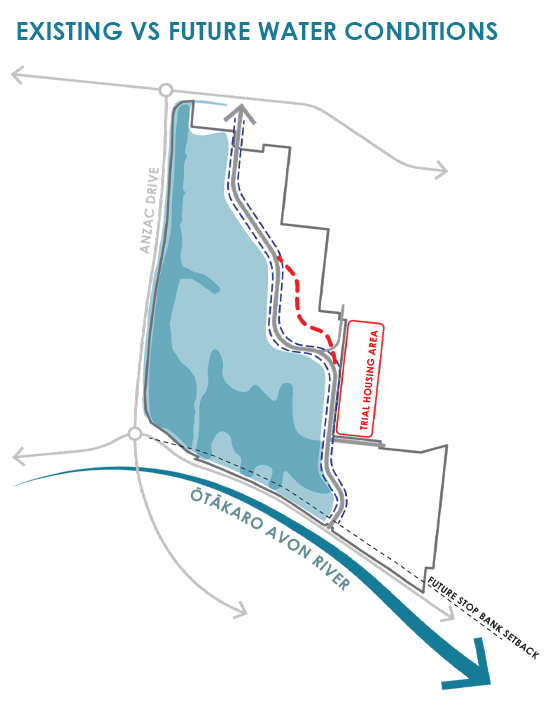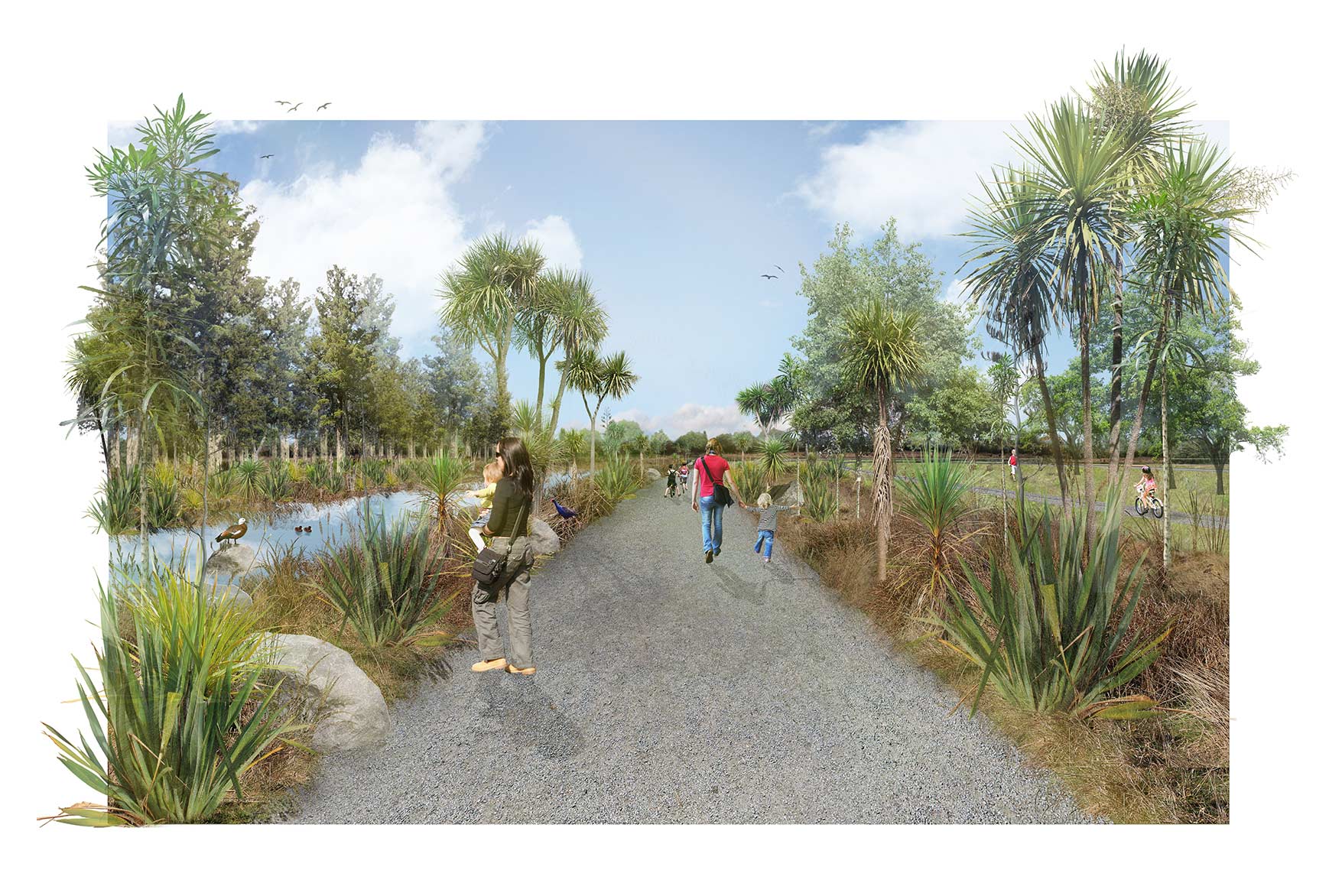A landscape-led design for ecological regeneration, community connection, and resilient open space.
The Lake Kate Sheppard sector sits within the eastern reaches of the Ōtākaro Avon River Corridor, on land formerly occupied by the Kate Sheppard Retirement Village. Damaged in the Canterbury earthquakes, the site has since transitioned into an ecologically significant area with high potential for wetland restoration.
Under the ŌARC Regeneration Plan’s 'Greenprint' vision, the natural environment is the defining feature of the corridor, and the Lake Kate Sheppard project reflects this, with a focus on preserving and enhancing native wetland habitats. Recreation plays a supporting role, and key community assets such as Bower Park are set for major upgrades.



